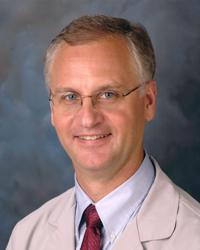Posture-Dependent Corticomotor Excitability Differs Between the Transferred Biceps in Individuals With Tetraplegia and the Biceps of Nonimpaired Individuals. Journal Article
Local Library Link: Find It @ Loyola
| Authors: | Peterson, CL; Rogers, LM; Bednar, MS; Bryden, AM; Keith, MW; Perreault, EJ; Murray, WM |
| Article Title: | Posture-Dependent Corticomotor Excitability Differs Between the Transferred Biceps in Individuals With Tetraplegia and the Biceps of Nonimpaired Individuals. |
| Abstract: | BACKGROUND: Following biceps transfer to enable elbow extension in individuals with tetraplegia, motor re-education may be facilitated by greater corticomotor excitability. Arm posture modulates corticomotor excitability of the nonimpaired biceps. If arm posture also modulates excitability of the transferred biceps, posture may aid in motor re-education. OBJECTIVE: Our objective was to determine whether multi-joint arm posture affects corticomotor excitability of the transferred biceps similar to the nonimpaired biceps. We also aimed to determine whether corticomotor excitability of the transferred biceps is related to elbow extension strength and muscle length. METHODS: Corticomotor excitability was assessed in 7 arms of individuals with tetraplegia and biceps transfer using transcranial magnetic stimulation and compared to biceps excitability of nonimpaired individuals. Single-pulse transcranial magnetic stimulation was delivered to the motor cortex with the arm in functional postures at rest. Motor-evoked potential amplitude was recorded via surface electromyography. Elbow moment was recorded during maximum isometric extension trials, and muscle length was estimated using a biomechanical model. RESULTS: Arm posture modulated corticomotor excitability of the transferred biceps differently than the nonimpaired biceps. Elbow extension strength was positively related and muscle length was unrelated, respectively, to motor-evoked potential amplitude across the arms with biceps transfer. CONCLUSIONS: Corticomotor excitability of the transferred biceps is modulated by arm posture and may contribute to strength outcomes after tendon transfer. Future work should determine whether modulating corticomotor excitability via posture promotes motor re-education during the rehabilitative period following surgery. |
| Journal Title: | Neurorehabilitation and neural repair |
| ISSN: | 1552-6844; 1545-9683 |
| Publisher: | Unknown |
| Date Published: | 2017 |

